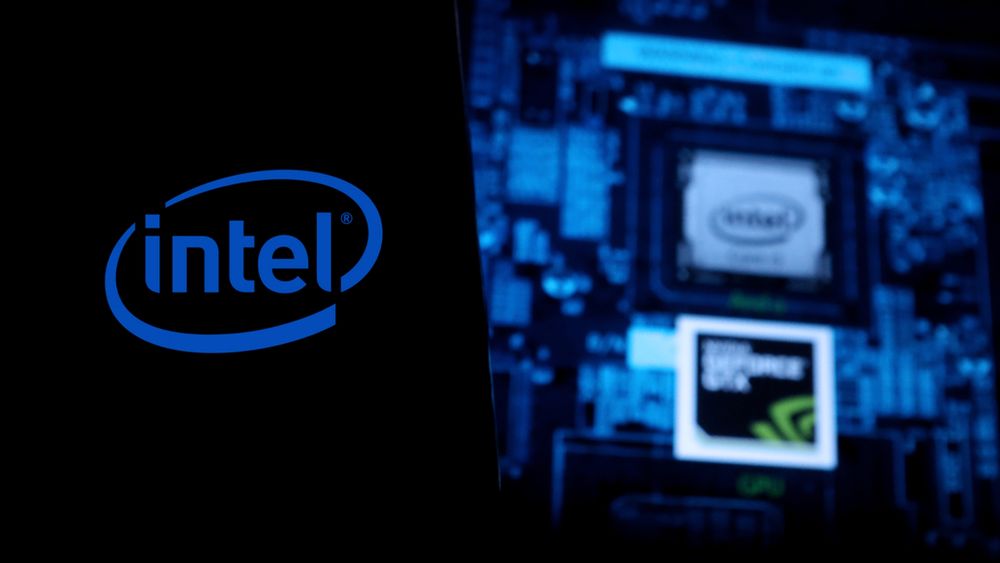Intel’s data centre business shrinks 20% year-on-year
Overall revenues remain flat as a surge in notebook CPU sales soften the blow


Intel’s data centre division sustained a 20.5% year-on-year decline, according to the firm’s first-quarter financial results for 2021, with overall revenues falling by 1%.
The embattled US chipmaker earned $19.7 billion during the first three months of 2021, with its data centre business accruing $5.56 billion. This, however, represents a $1.43 billion drop in earnings for its data centre business compared with the first quarter of 2020.
Intel’s overall revenues remained roughly flat, falling 0.6% over this period, with a 54% surge in revenue for notebook CPUs, driven largely by COVID-19, offsetting declines elsewhere.
"We are in a slowdown of cloud consumption – the cloud market typically goes through two to three quarters of purchasing activity and then one to two quarters of digestion," Gartner VP Analyst and Intel analyst Alan Priestley told IT Pro. "Throughout 2020 cloud was a buying period and now we are entering a digestion period.
"The overall enterprise market is still impacted by the pandemic, 1Q20 was relatively strong (pre-pandemic) but it has been in decline since. Both Intel’s average selling price and units sold were down in this report while in 1Q20 they were relatively strong."
The company described its data centre revenue as “better than expected” in a call with analysts, with Intel’s chief financial officer, George Davis, suggesting he expects revenues to increase through the rest of the year. This is because he expects momentum to pick up in the firm's dealings with enterprise and government customers.
Intel is also pinning its hopes of a data centre recovery on the launch of its third-gen Intel Xeon Scalable processor, codenamed Ice Lake, which claims to deliver 62% greater performance against the previous generation of data centre chips.
Sign up today and you will receive a free copy of our Future Focus 2025 report - the leading guidance on AI, cybersecurity and other IT challenges as per 700+ senior executives
The company also claims that this chip is the only data centre CPU with built-in artificial intelligence (AI) and advanced security capabilities.
Intel faces competition, however, in the form of Nvidia’s newly-announced Arm-based data centre CPU, which combines Arm CPU cores with a low-power memory subsystem to help it analyse gigantic datasets.
Dubbed Nvidia Grace, the launch of this chip is an attempt to topple Intel in the data centre market, after its chief executive Jensen Huang outlined plans to go after the chipmaker in August 2020.
In an interview with the Financial Times (FT), he spoke of the firm’s intentions to supply “the full technology stack needed to run data centres”. This launch also comes a year after Nvidia’s $7 billion acquisition of Mellanox Technologies, which makes critical data centre components.
Intel recently announced plans to revitalise its business after a rocky year, with the firm investing $20 billion into building two Arizona-based factories, alongside the pursuit of its integrated device manufacturing (IDM) 2.0 strategy.
This strategy will also see the company launch a fully-fledged foundry service, which will involve making custom CPUs for tech firms and national governments.

Keumars Afifi-Sabet is a writer and editor that specialises in public sector, cyber security, and cloud computing. He first joined ITPro as a staff writer in April 2018 and eventually became its Features Editor. Although a regular contributor to other tech sites in the past, these days you will find Keumars on LiveScience, where he runs its Technology section.
-
 The six biggest security challenges coming in 2026
The six biggest security challenges coming in 2026In-depth What will be the main challenges businesses face in 2026 and what can they do to prepare?
-
 Channel focus: All you need to know about Microsoft's partner program
Channel focus: All you need to know about Microsoft's partner programChannel Focus The veteran OS developer and vendor continues to advance its strategy, particularly in Azure cloud solutions and AI